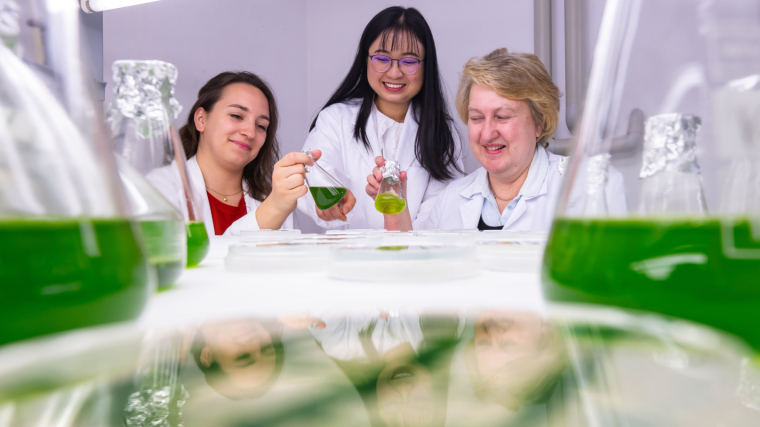
Our research concerns the molecular mechanism of biological circadian clocks. Circadian (circa = about; diem = day) clocks exist from cyanobacteria to humans and control numerous cellular processes. The endogenous clock is entrained by so called "Zeitgeber". The most important "Zeitgeber" are light-dark as well as temperature cycles. We are especially interested in understanding receptors perceiving light and temperature information. We analyze their functional modes of action to entrain circadian clocks or to regulate other processes such as developmental cycles, photosynthesis or growth rates. We have chosen the green alga Chlamydomonas reinhardtii as primary model organism. The unicellular alga has a primitive visual system, the eyespot as well as two flagella for movement and orientation with a light gradient and possesses numerous photoreceptors. Light and nutrients control its sexual cycle. Moreover, we examine the interaction of microalgae with other microorganisms taking freshwater and marine Chlamydomonas spp. As models. We are looking for chemical mediators that influence these interactions as well as for the resulting signalling cascades.
We participate in the following large scale projects: